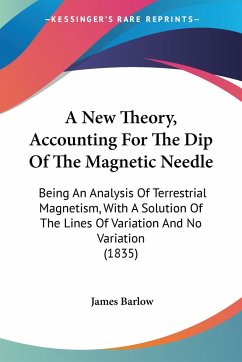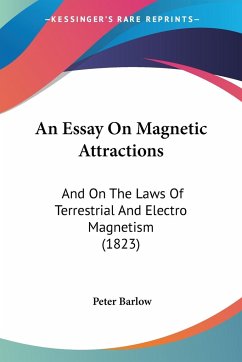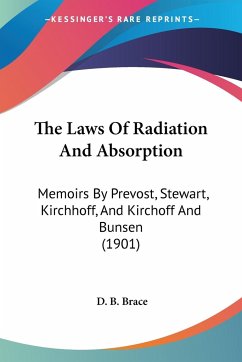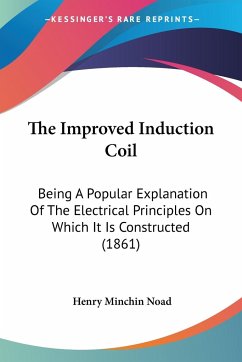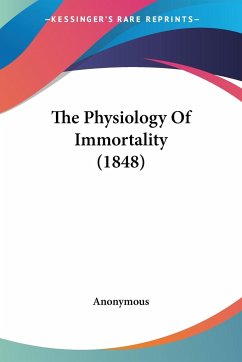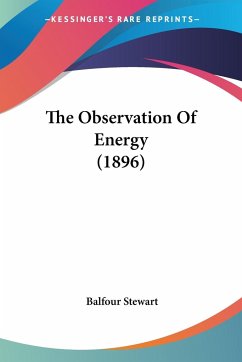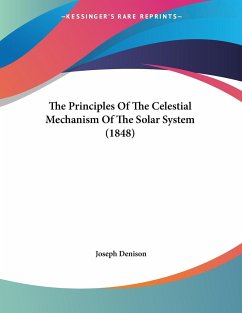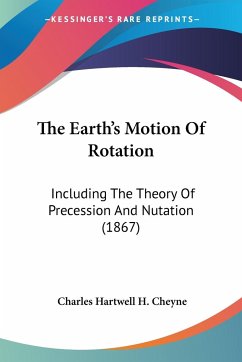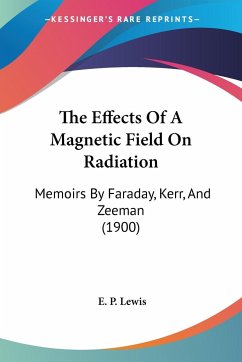
The Effects Of A Magnetic Field On Radiation
Memoirs By Faraday, Kerr, And Zeeman (1900)
Herausgeber: Lewis, E. P.
Versandkostenfrei!
Versandfertig in 1-2 Wochen
22,99 €
inkl. MwSt.

PAYBACK Punkte
11 °P sammeln!
Text extracted from opening pages of book: SCIENTIFIC MEMOIRS EDITED BY J. S. AMES, PH. D. PROFESSOR OP PHYSICS IN JOHNS HOPKINS UNIVERSITY VIII. THE EFFECTS OF A MAGNETIC FIELD ON RADIATION THE EFFECTS OF A MAGNETIC FIELD ON RADIATION MEMOIRS BY FARADAY, KERR AND ZEEMAN EDITED BY E. P. LEWIS, PH. D. NEW YORK .: CINCINNATI: CHICAGO AMERICAN BOOK COMPANY COPYRIGHT, 1900, BY AMERICAN BOOK COMPANY. W. P. I PBEFACE Historical IN the early part of this century possible relationships between the various forces of nature began to attract the attention of physicists. In 1800 William Herschel discovered that a heat spectrum is superimposed on and extends be yond the visible solar spectrum, indicating some relationship between heat and light. This seems to have suggested to Domenico Morichini, of Kome, the search for a relationship between light and magnetism. In 1812 he claimed that he had been able to magnetize steel needles by exposing them to the violet radiation in the solar spectrum. Others, including Mrs. Somemlle, in England, believed that they had verified his results, but many wore unable to reproduce them, and it was finally demonstrated that all these effects had been due to other causes. The dispute over this question extended over many years, and is an instructive illustration of the difficulty which even skilled experimenters may have in solving a com paratively simple experimental problem. About 1825 Sir John Herschel sent a polarized beam of light along the axis of a helix carrying an electric current. Exami nation with an analyzer showed no effect. He also intended to test the effect of a polarized beam passing tangentially by a con ductor carrying a current, but never executedthe experiment. No other attempt to show a relationship between light and magnetism seems to have been made until Faraday undertook the investigation described in the following pages. Theoretical In the Proceedings of the Royal Society for June, 1856, Sir William Thomson wrote: The magnetic influence on light PREFACE discovered by Faraday depends on the direction of motion of moving particles. For instance, in a medium possessing it, particles in a straight line parallel to the lines of magnetic force, displaced to a helix round this line as axis, and then projected tangentially with such velocities as to describe circles, will have different velocities according as their mo tions are round in one direction ( the same as the nominal direction of the galvanic current in the magnetizing coil) or in the contrary direction. But the elastic reaction of the medium, must be the same for the same displacements, what ever be the velocities ami directions of the particles; that is to say, the forces which are balanced by centrifugal force of the circular motions are equal, while the luminiferous motions are unequal. The absolute circular motions being, therefore, either equal, or such as to transmit equal centrifugal forces to the particles initially considered, it follows that the luminife rous motions are only components of the whole motion; ami that a less luminiferous component in one direction, com pounded with a motion existing in the medium when trans mitting no light, gives an equal resultant to that of a greater luminiferous motion in the contrary direction, compounded with the same non-luminous motion. Maxwell, in his Electricity and Magnetism, , vol. ii., chap, xxi, offers thefollowing partial physical explanation as an exten sion of the above remarks: * It is a well-known theorem in kinematics that two uniform circular vibrations, of the same amplitude, having the same periodic time, and in the same plane, but revolving in opposite directions, are equivalent, when compounded together, to a rectilinear vibration. The periodic time of this vibration is equal to that of the circular vibrations, its amplitude is double, and its direction is in the line joining the points at which two particles, describing the circular vibrations in opposite dire
The Effects Of A Magnetic Field On Radiation: Memoirs By Faraday, Kerr, And Zeeman (1900) is a book that compiles the memoirs of three prominent scientists - Michael Faraday, John Kerr, and Pieter Zeeman - on the topic of the effects of a magnetic field on radiation. The book was edited by E. P. Lewis and was originally published in 1900.The memoirs included in the book provide a detailed account of the experiments conducted by Faraday, Kerr, and Zeeman to study the interaction between magnetic fields and radiation. Faraday's memoir focuses on his work on the rotation of the plane of polarization of light in a magnetic field, while Kerr's memoir discusses his experiments on the effect of a magnetic field on the refractive index of a medium. Zeeman's memoir, on the other hand, describes his discovery of the splitting of spectral lines in a magnetic field, which is now known as the Zeeman effect.The book is a valuable resource for anyone interested in the history of science and the development of our understanding of the interaction between magnetic fields and radiation. It provides a unique insight into the thought processes and experimental methods of three of the most influential scientists in this field.This scarce antiquarian book is a facsimile reprint of the old original and may contain some imperfections such as library marks and notations. Because we believe this work is culturally important, we have made it available as part of our commitment for protecting, preserving, and promoting the world's literature in affordable, high quality, modern editions, that are true to their original work.



